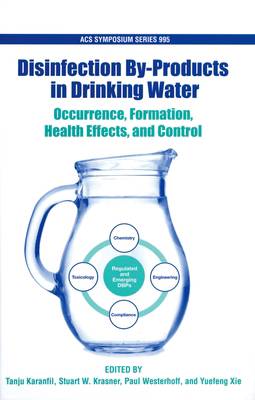
- Afhalen na 1 uur in een winkel met voorraad
- Gratis thuislevering in België vanaf € 30
- Ruim aanbod met 7 miljoen producten
- Afhalen na 1 uur in een winkel met voorraad
- Gratis thuislevering in België vanaf € 30
- Ruim aanbod met 7 miljoen producten
Zoeken
€ 121,95
+ 243 punten
Omschrijving
Since their discovery, disinfection by-products (DBPs) have become one of the major driving forces in drinking water regulations, research and water utility operations throughout the world. The list of DBPs that can occur in treated drinking waters has grown from a few trihalomethanes to a long list of halogenated and non-halogenated organic or inorganic compounds. This list is expected to continue to grow as the analytical techniques are improved, as more information on their toxicity is developed, and as more occurrence studies are conducted. This book documents the latest DBP research findings, including emerging issues and state-of-the-art studies. Specifically, papers on the occurrence, formation, control, and health effects of emerging (unregulated) halogenated (e.g., brominated) and nonhalogenated (e.g., nitrosamines) DBPs (e.g., emerging nitrogenous vs. regulated carbonaceous DBPs) are presented. In addition to the characterization and reactivity of natural organic matter to form DBPs, new studies on algal organic matter and treated wastewater as sources of DBPs and their precursors are discussed.
Specificaties
Betrokkenen
- Auteur(s):
- Uitgeverij:
Inhoud
- Aantal bladzijden:
- 384
- Taal:
- Engels
- Reeks:
- Reeksnummer:
- nr. 995
Eigenschappen
- Productcode (EAN):
- 9780841269507
- Verschijningsdatum:
- 5/08/2008
- Uitvoering:
- Hardcover
- Formaat:
- Genaaid
- Afmetingen:
- 156 mm x 234 mm
- Gewicht:
- 707 g

Alleen bij Standaard Boekhandel
+ 243 punten op je klantenkaart van Standaard Boekhandel
Beoordelingen
We publiceren alleen reviews die voldoen aan de voorwaarden voor reviews. Bekijk onze voorwaarden voor reviews.











